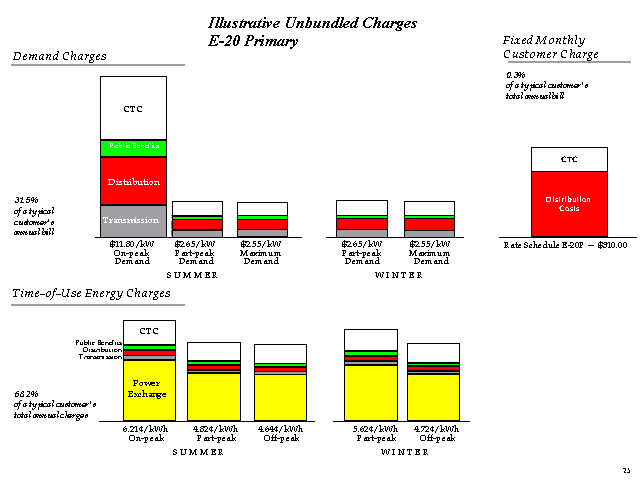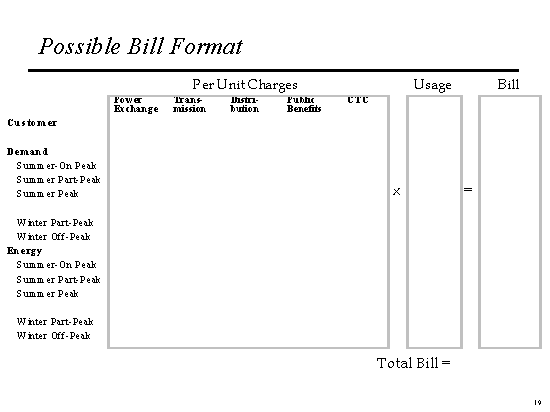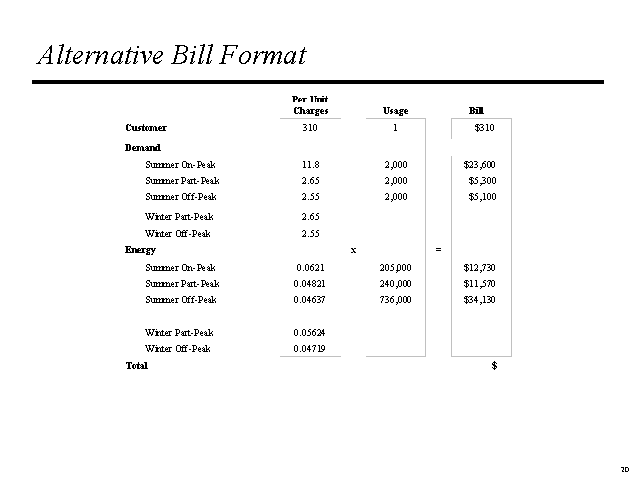PG&E's July 15 Unbundling
Proposal before the CPUC
Presentation before
the
Ratesetting Working Group
July 26, 1996
Track 1
(necessary for direct access implementation)
Generation (including ancillary services)
Transmission
Distribution
Public Goods
CTC
Track 2
(additional potential for unbundling post-1998)
Billing and Metering
Customer Service
Complaint Resolution
Line Extensions
New Hookups
Credit & Collection
Cost/Service: Allocation Method
Energy: Power Exchange
Transmission/ISO: FERC Method
Distribution: EPMC
Public Benefits: SAPC
CTCs:
- Current Share of CTC Rev
- Generation EPMC
- Residual
- Others
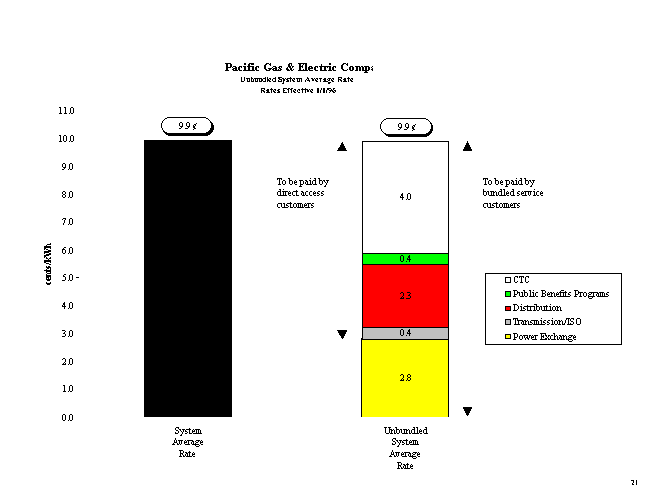

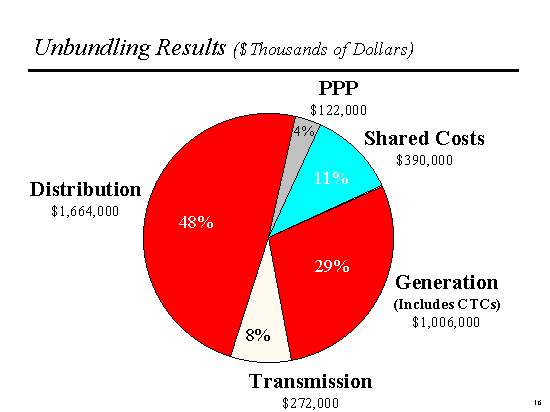
Next: How To Reflect Cost Of Unbundled Components On Customer Bills
